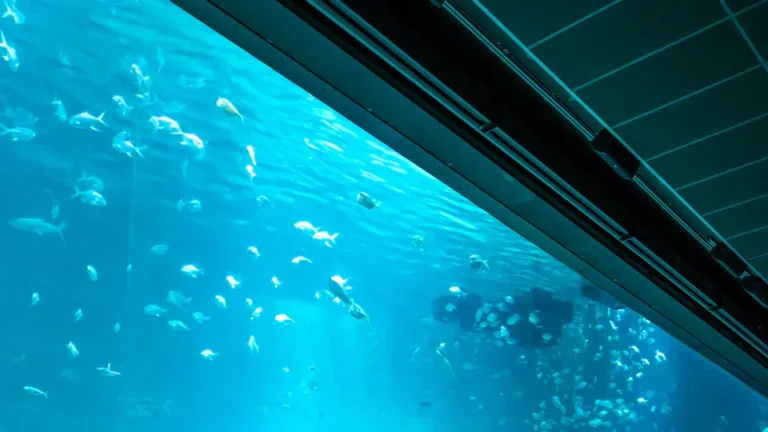Carvão ativado em aquacultura
.webp)
Buy Aquaculture Activated Carbon
Desafios do sector
Environmental and Production Constraints
- Tightening regulations on manufacturing emissions
- Sustainable sourcing difficulties for raw materials
- Supply chain instability affecting quality consistency
Technical Performance Limitations
- Non-selective adsorption of beneficial nutrients
- Rapid saturation in nutrient-rich water requiring frequent replacement
- Temperature-dependent efficiency fluctuations
- Clogging issues in filtration systems
Operational Integration Challenges
- Complex monitoring requirements for water parameters
- Poor system integration causing inefficiencies
- Difficulty balancing toxin removal with ecosystem preservation
Innovation and Standardization Gaps
- Fragmented industry with limited R&D capabilities
- Slow development of specialized bio-enhanced variants - Lack of uniform performance benchmarks
- Lack of uniform performance benchmarks
- Insufficient real-world validation data
tipos relacionados de carvão ativado
-r8fslg51nt6wgjtvh6yldxb1gtkgm3lpe0oq1akgog.webp)
- Valor de iodo: 600-1200
- Tamanho da malha: 1×4/4×8/8×16/8×30/12×40/20×40/20×50/30×60/40×70 (Mais tamanho a pedido)
- Densidade aparente: 400-700
-r8fsli0q1h9h3rr567ruiwtynlb71ht629zozuhoc0.webp)
- Valor de iodo: 500-1300
- Tamanho da malha:0.9-1mm/1.5-2mm/3-4mm/6mm/8mm(Mais tamanho a pedido)
- Densidade aparente: 450-600
-r8fslbfupn0gui0p8mxgjghqhw7mjm31pdfamwrfjk.webp)
- Valor de iodo: 500-1300
- Dimensão da malha: 150/200/300/350 (outras dimensões a pedido)
- Densidade aparente: 450 - 550
-r8fsle9da54btbwls65c8xs4a1tq6pe8prdr2qn90w.webp)
- Valor de iodo: 400-800
- Tamanho da malha: 100×100×100mm/100×100×50mm (densidade celular personalizada a pedido)
- Densidade aparente: 350-450
- Diâmetro do furo: 1,5-8 mm

- Valor de iodo: 700-1200 mg/g
- Área de superfície: 700-1200 m²/g
- Densidade aparente: 320-550 kg/m³

- Valor de iodo: 700-1200 mg/g
- Área de superfície: 700-1200 m²/g
- Densidade aparente: 320-550 kg/m³

- Valor de iodo: 700-1200 mg/g
- Área de superfície: 700-1200 m²/g
- Densidade aparente: 300-650 kg/m³

- Valor de iodo: 700-1200 mg/g
- Área de superfície: 700-1200 m²/g
- Densidade aparente: 320-550 kg/m³

- Método de ativação: Ativação por vapor/gás a altas temperaturas
- Estrutura de poros: Microporosa dominada, distribuição uniforme dos poros
- Perfil ambiental: Sem químicos, baixo teor de cinzas
- Aplicações principais: Adsorção em fase gasosa, purificação de água potável

- Método de ativação: Ativação química (por exemplo, H₃PO₄/ZnCl₂) a temperaturas moderadas
- Estrutura de poros: Mesoporoso-rico, maior área de superfície
- Eficiência do processo: Tempo de ativação mais curto, rendimento 30-50% mais elevado
- Pós-tratamento: É necessária uma lavagem com ácido para remover os resíduos

- Funcionalização: Carregado com agentes activos (por exemplo, I₂/Ag/KOH)
- Adsorção direcionada: Captura melhorada de poluentes específicos (por exemplo, Hg⁰/H₂S/gases ácidos)
- Personalização: Quimicamente optimizado para contaminantes alvo
- Aplicações principais: Tratamento de gases industriais, proteção CBRN
Porquê utilizar o nosso carvão ativado

Enhanced Adsorption Efficiency:
Our activated carbon features optimized pore structure and surface chemistry for superior removal of aquaculture-specific contaminants like ammonia, nitrites, and dissolved organics.

Eco-Friendly Material Sourcing
We utilize sustainably harvested raw materials with verified traceability to ensure minimal environmental impact throughout the product lifecycle.

Extended Operational Longevity:
Engineered for slower saturation rates and reduced clogging, our carbon maintains peak performance longer under high-load aquaculture conditions.
Common Solutions and Applications of Activated Carbon in Aquaculture
1. Wastewater Treatment in Membrane Bioreactors (MBR-PAC Systems)
Visão geral da solução
Powdered Activated Carbon (PAC) use integrated with submerged Membrane Bioreactors (MBR) to treat salted aquaculture wastewater. The addition of PAC increases the removal of pollutants and reduces membrane fouling from salinity variability and organic loads.
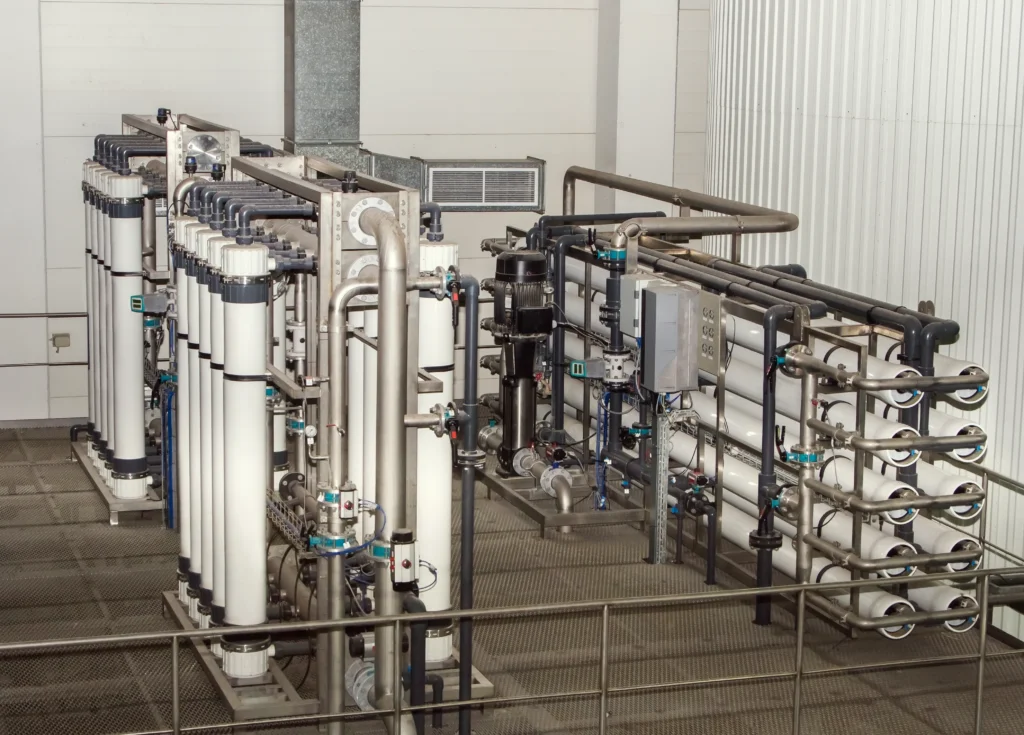
Principais vantagens
- Improved Pollutant Removal: Significantly boosts COD, ammonia nitrogen (NH₄⁺-N), and nitrite nitrogen (NO₂⁻-N) removal efficiency compared to standalone MBR systems.
- Enhanced Membrane Performance: Reduces fouling by adsorbing soluble microbial products (SMP) and extracellular polymeric substances (EPS), extending membrane lifespan and maintaining stable flux.
- Salinity Resilience: Maintains treatment stability during salinity shocks by adsorbing dissolved organics and reducing protein content in sludge flocs.
- Larger Floc Formation: Promotes sludge aggregation, increasing particle size and improving solid-liquid separation.
2. Recirculating Aquaculture Systems (RAS) for Advanced Purification
Visão geral da solução
Biological Activated Carbon (BAC) filters are used in RAS for post-treatment after mechanical and biological filtration. Microorganisms colonize the carbon surface, enabling simultaneous adsorption and biodegradation of pollutants.
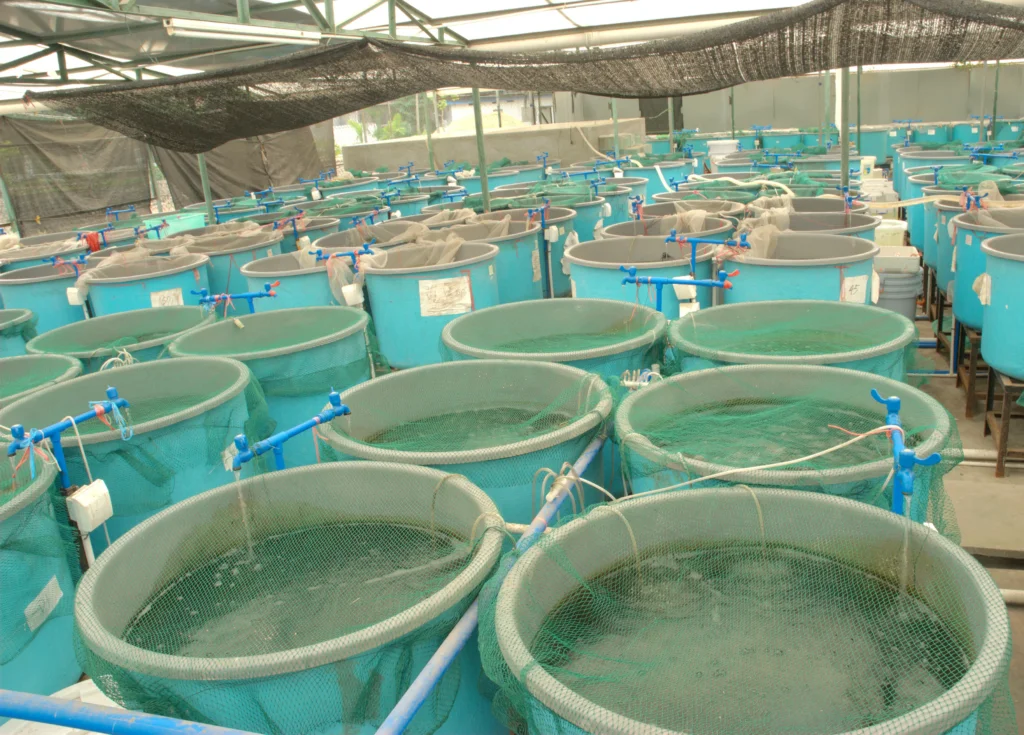
Principais vantagens
- Effective Nitrogen Compound Removal: Achieves high removal rates of ammonia and nitrite through microbial degradation, meeting stringent water reuse standards.
- Water Reusability: Produces effluent suitable for recirculation, reducing freshwater dependency and minimizing environmental discharge.
- Dual Adsorption-Biodegradation: Combines physical adsorption of organics/COD with biological degradation, enhancing overall treatment efficiency.
- Adaptability to Low Loads: Efficiently treats trace pollutants even at low inlet concentrations, unlike conventional activated carbon.
3.Biofloc Technology (BFT) Carbon Source Supplementation
Visão geral da solução
Activated carbon serves as a carbon source in biofloc systems to adjust the carbon-to-nitrogen (C/N) ratio. This stimulates heterotrophic bacterial growth, converting toxic nitrogen compounds into microbial protein (bioflocs).
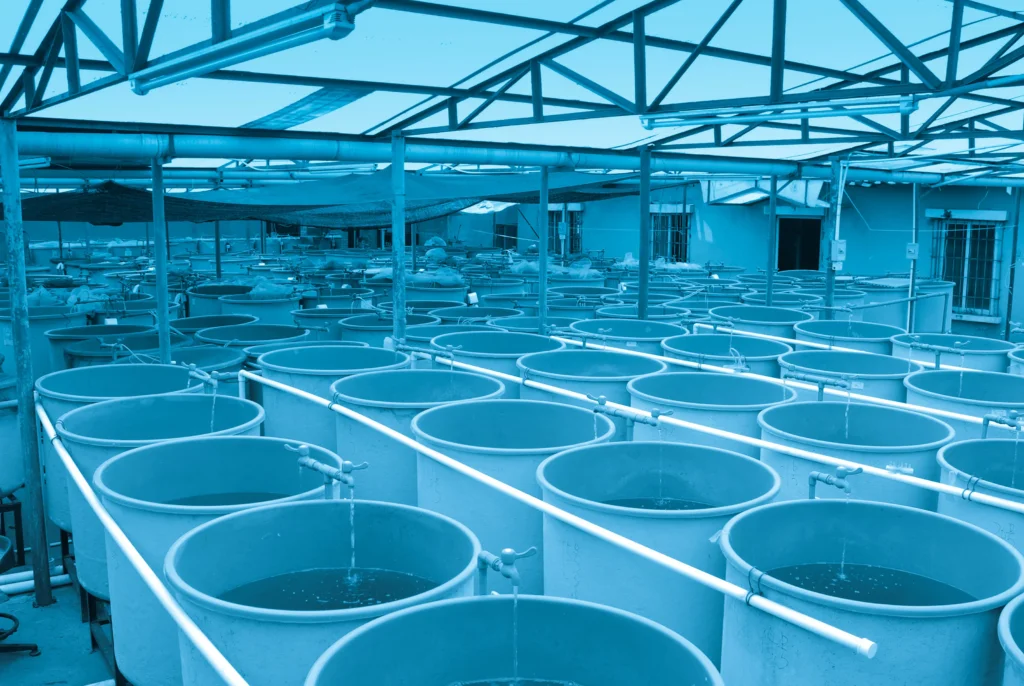
Principais vantagens
- Toxin Conversion: Accelerates transformation of ammonia and nitrite into non-toxic bioflocs, improving shrimp/fish survival rates.
- Water Quality Stabilization: Reduces accumulation of harmful nitrogen compounds and maintains balanced microbial communities.
- Nutritional Supplement: Bioflocs serve as supplemental feed, enhancing growth efficiency and reducing feed costs.
- System Resilience: Mitigates water exchange requirements and supports disease resistance in intensive farming.
4. Dedicated Purification for Seafood Holding Tanks
Visão geral da solução
Granular activated carbon (GAC) is integrated into filtration units of seafood holding tanks (e.g., restaurants, supermarkets) to adsorb impurities and maintain water clarity during live seafood storage.

Principais vantagens
- Multi-Contaminant Removal: Efficiently adsorbs residual chlorine, heavy metals, odors, and organic matter, ensuring a clean habitat.
- Extended Seafood Vitality: Preserves dissolved oxygen levels and reduces stress, prolonging seafood survival and freshness.
- Algae and Odor Control: Inhibits algal blooms and eliminates (fishy odors), enhancing visual and olfactory water quality.
- Ease of Deployment: Simple installation in filter bags/cartridges with minimal maintenance.
5. Emergency Water Quality Management
Visão geral da solução
Activated carbon is used as a short-term intervention to adsorb sudden surges of organic pollutants, medications (e.g., antibiotics), or toxins during water quality crises.
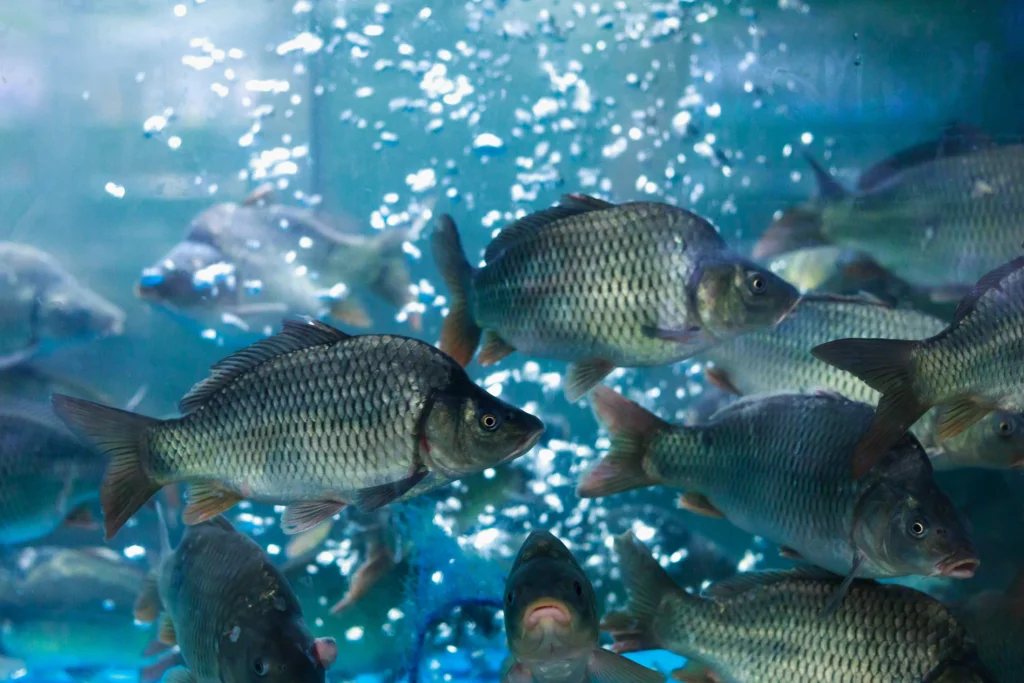
Principais vantagens
- Rapid Contaminant Adsorption: Quickly binds organic toxins, residual drugs, and hydrogen sulfide, preventing acute toxicity.
- Water Clarity Restoration: Removes turbidity and discoloration caused by dissolved organics or algal byproducts.
- Non-Disruptive Application: Compatible with existing systems without altering water chemistry parameters like pH.
- Temporary Nitrification Support: Lowers carbon-to-nitrogen ratio to aid (nitrification) system recovery during imbalances.

